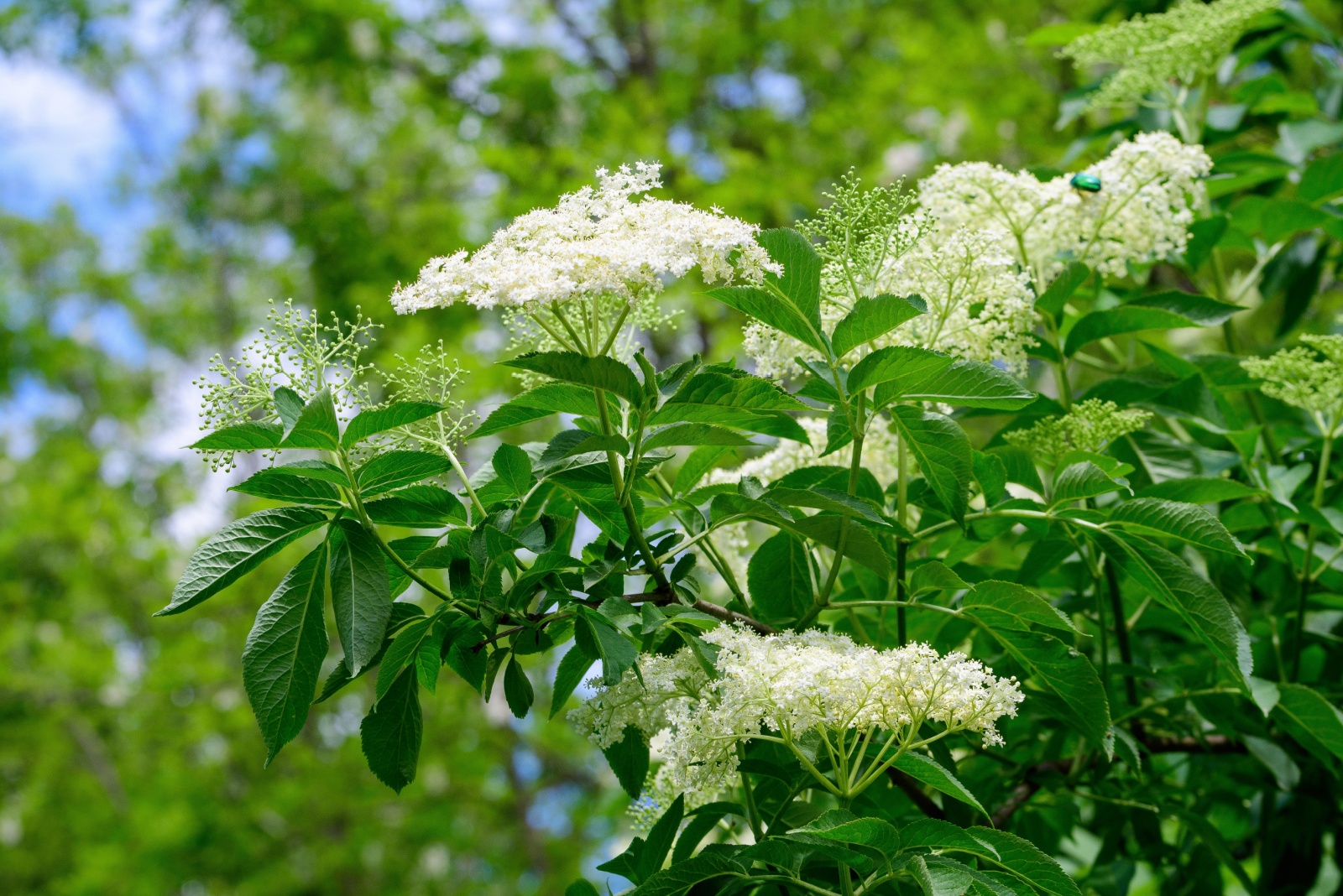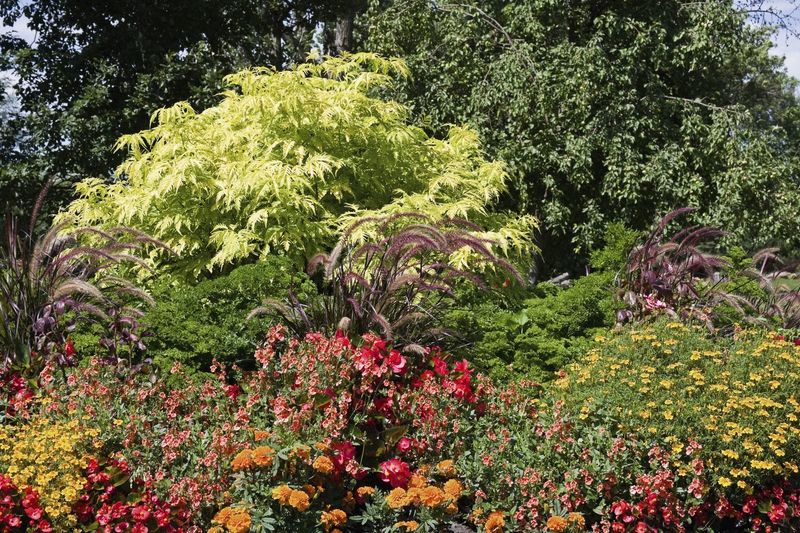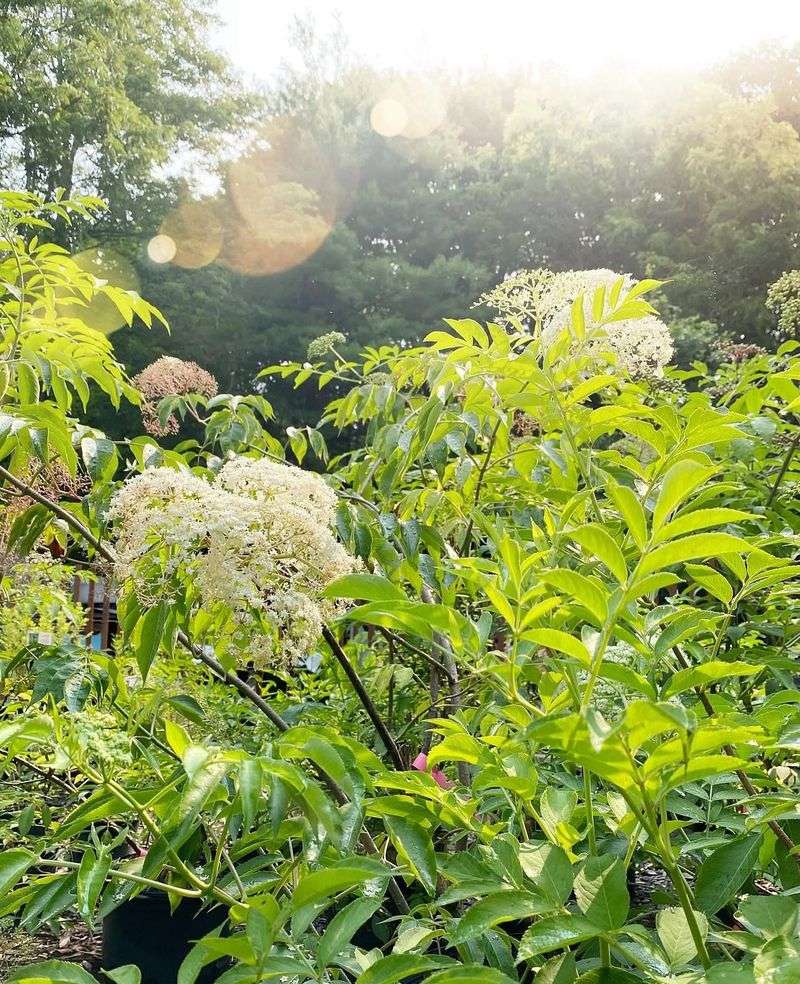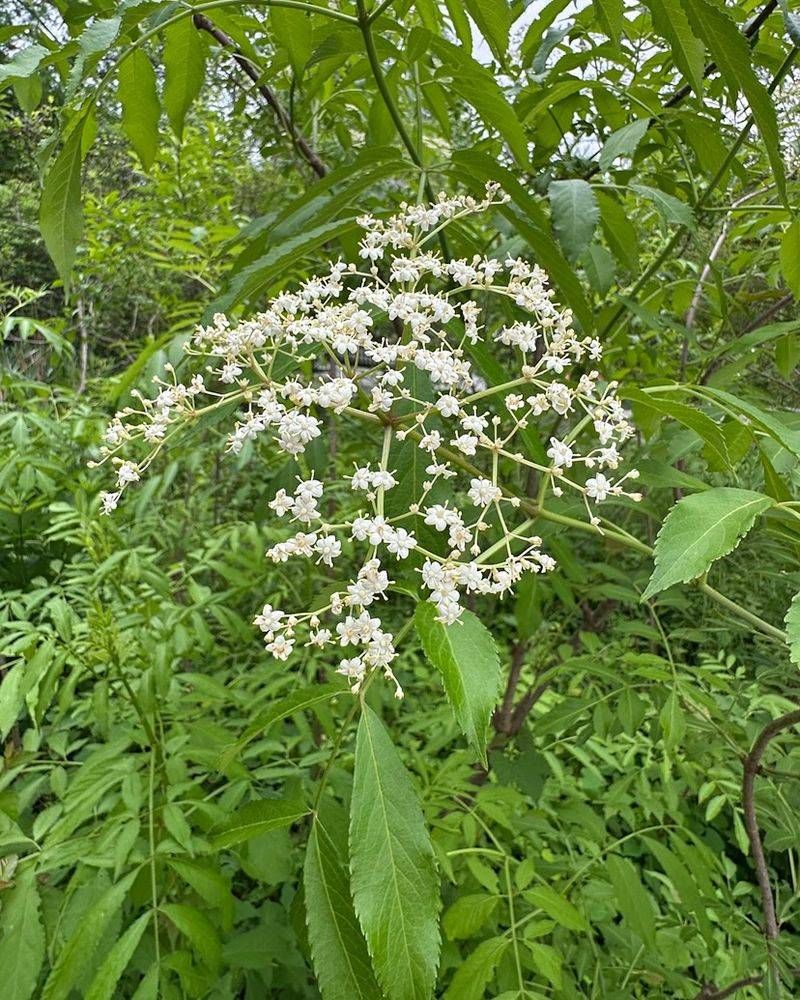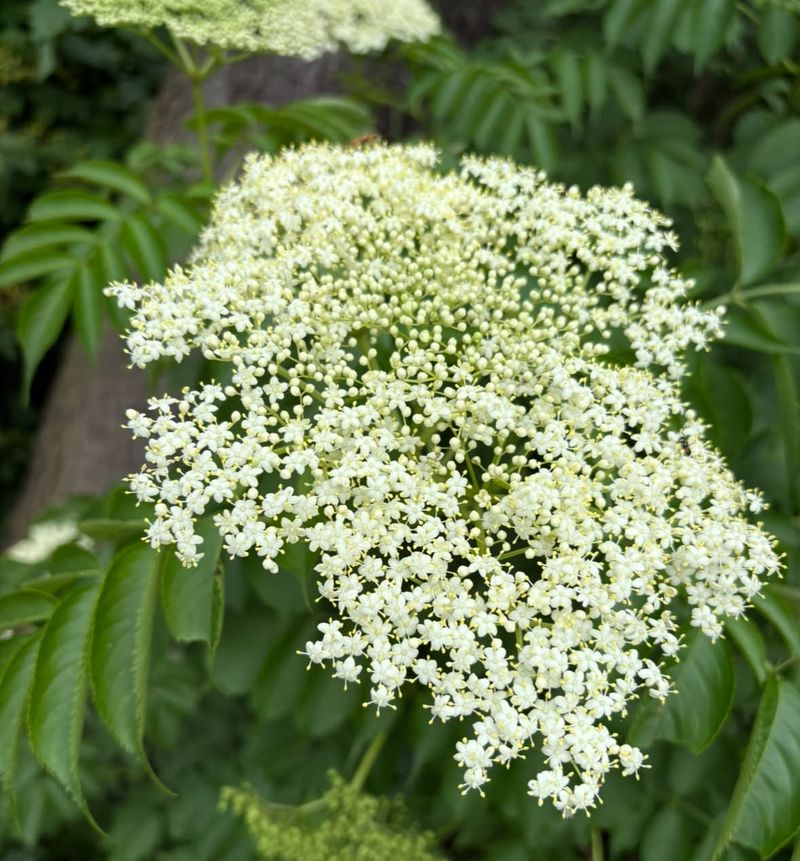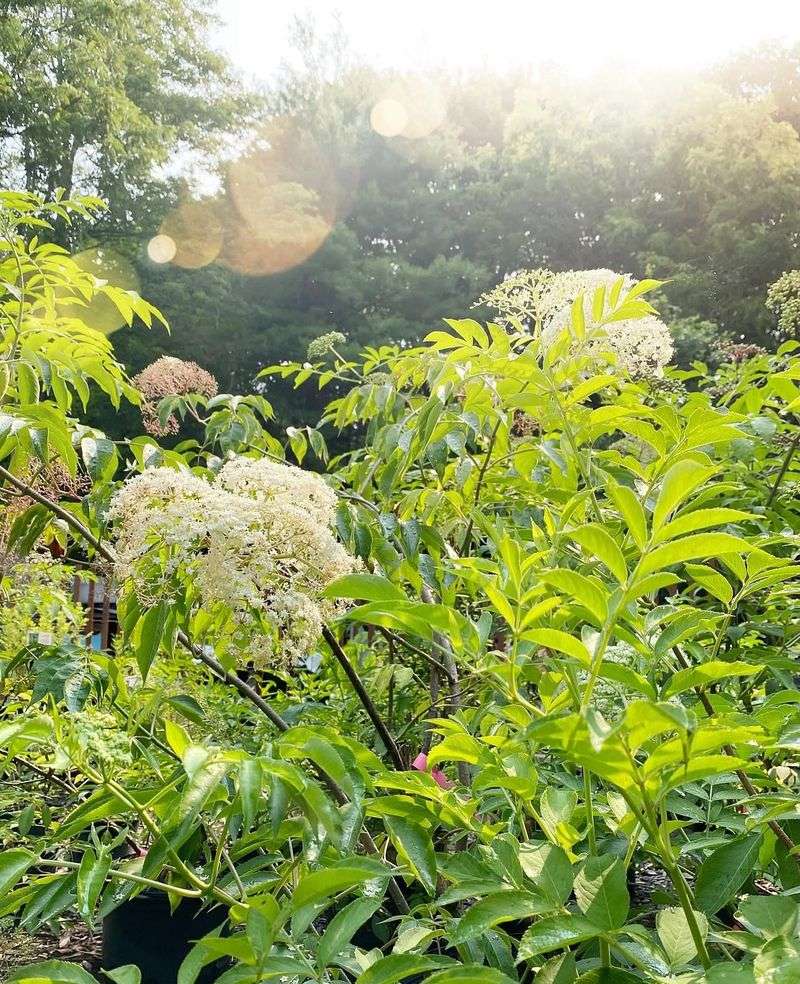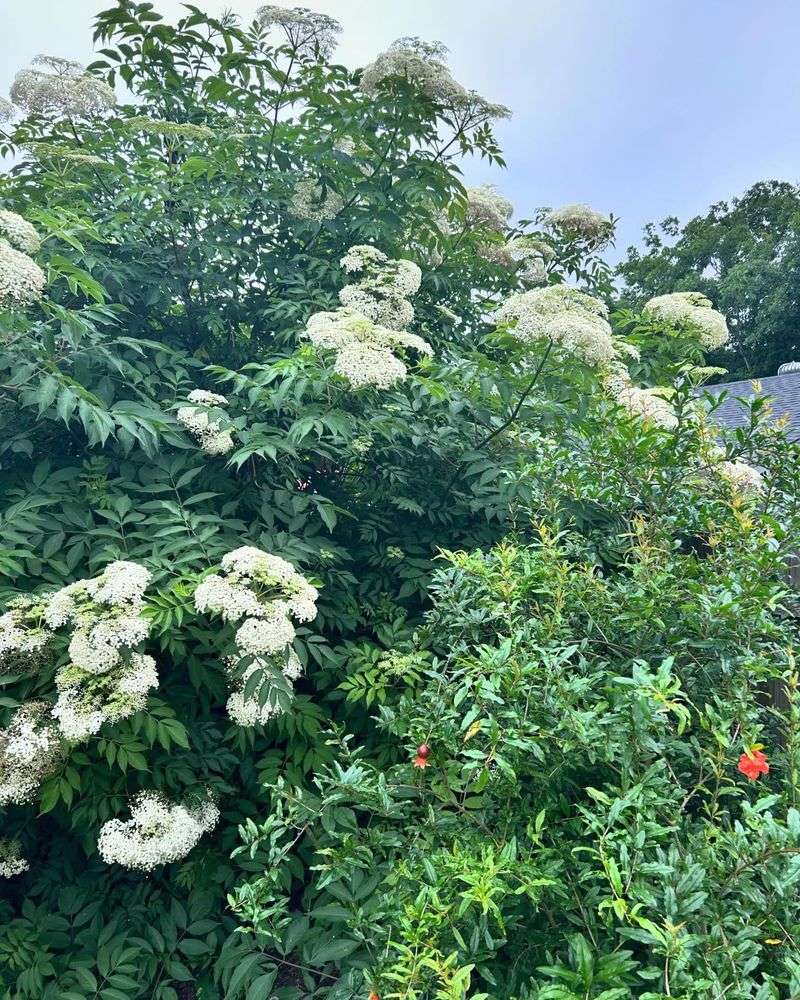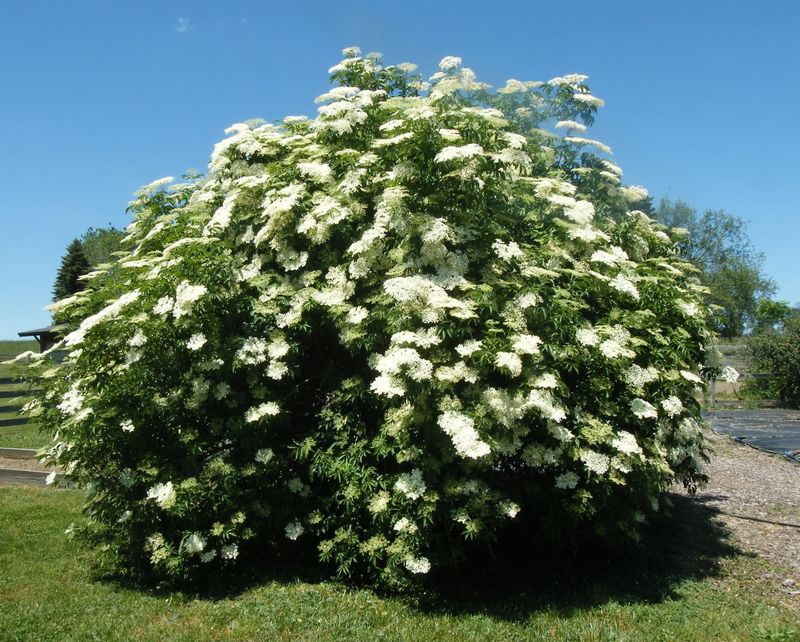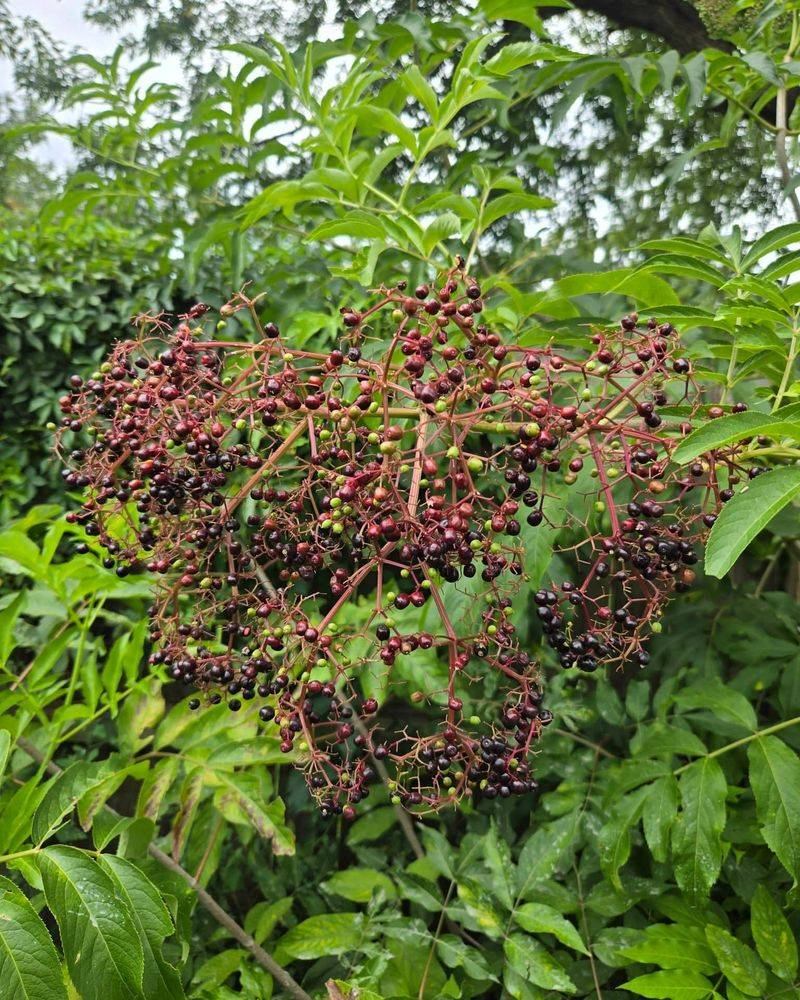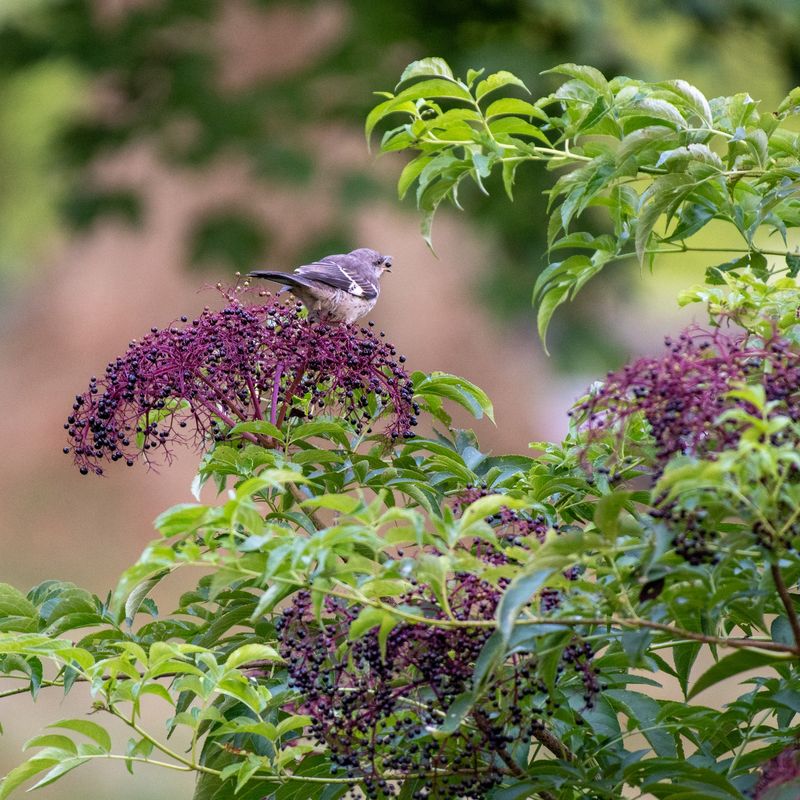Minneapolis gardeners have a special opportunity to create wildlife-friendly spaces in their yards. Native elderberry hedges offer both beauty and function, providing shelter and food for local birds while thriving in our northern climate. These versatile shrubs can be incorporated into existing landscapes with minimal fuss.
The Twin Cities region hosts over 300 bird species throughout the year, many of which depend on native berries for sustenance during migration or winter months. Elderberry’s dark purple fruits appear in late summer, just when many birds are preparing for their southern journeys.
Creating bird-supporting hedges doesn’t require a complete garden overhaul. With thoughtful planning, even small yards can accommodate these beneficial plants. The following ideas showcase ways Minneapolis gardeners can incorporate native elderberries while creating havens for our feathered neighbors.
1. Mixed Native Border With Adams Elderberry
Adams elderberry makes an excellent anchor plant in a mixed border. Pair it with other Minnesota natives like dogwood and viburnum to create a layered habitat that birds love.
The varying heights provide different nesting zones, while staggered blooming times ensure continuous food sources. Minneapolis gardeners appreciate how these plants naturally thrive together with minimal intervention.
For winter interest, include evergreens like juniper that offer shelter during harsh months. This combination creates a year-round bird sanctuary that looks naturally beautiful in any yard setting.
2. Elderberry Rain Garden Solution
Transform problematic wet areas into ecological powerhouses. Elderberries thrive in moist conditions, making them perfect for Minneapolis rain gardens where they’ll soak up excess water while supporting wildlife.
Plant them alongside other moisture-loving natives like cardinal flower and blue flag iris. This creates a stunning display that changes with the seasons while handling our increasingly heavy rainfall events.
Birds particularly appreciate the dense cover elderberries provide near water sources. The combination of shelter, food, and drinking water makes these gardens irresistible to local and migrating species.
3. Backyard Berry Buffet Hedge
Create an edible landscape that serves both humans and birds. Plant a row of elderberries alongside serviceberries, chokeberries, and native raspberries for a true Minnesota berry buffet.
The varying fruiting times ensure birds have food from early summer through fall. Minneapolis gardeners can harvest their share while leaving plenty for wildlife – elderberry jam and syrup are local favorites.
This approach works especially well along property lines where the informal growth habit creates a natural-looking boundary. The birds will thank you with their presence and songs throughout the growing season.
4. Four-Season Bird Sanctuary Corner
Dedicate a corner of your Minneapolis yard to year-round bird support. Elderberries form the backbone, while spring ephemerals bloom beneath them when migrating birds first arrive.
Add native grasses that provide seeds in fall and winter when berries are gone. The varied structure gives birds places to rest, nest, and hide from predators throughout the changing Minnesota seasons.
This low-maintenance approach requires just one annual cutting back of spent stems. The naturalistic style fits perfectly with Minneapolis’s growing interest in ecological landscaping while supporting dozens of bird species.
5. Pollinator Pathway With Wild Elderberry
Wild elderberry’s umbrella-shaped flower clusters attract numerous pollinators, creating a buzzing highway through your garden. This activity draws insect-eating birds like warblers and chickadees – a natural pest control system.
Minneapolis gardeners can enhance this effect by adding native wildflowers that bloom before and after elderberries. The extended flowering season supports pollinators from spring through fall.
Position your pathway to connect with neighbors’ gardens or nearby natural areas. This creates a larger habitat corridor through urban Minneapolis neighborhoods, helping birds move safely between feeding areas.
6. Privacy Screen With York Elderberry
The tall, dense growth of York elderberry makes an ideal natural privacy screen. Reaching 8-12 feet in height, these shrubs create a living wall that blocks views while providing prime bird habitat.
Minneapolis yards with close neighbors benefit from this dual-purpose planting. The quick growth rate means your screen establishes faster than many other native options, usually filling in completely by the third year.
The white flowers and dark berries add visual interest against the deep green foliage. Robins, catbirds, and thrashers particularly favor these dense hedges for nesting sites while enjoying the fruit bounty.
7. Boulevard Butterfly & Bird Haven
Transform that challenging strip between sidewalk and street into a wildlife sanctuary. Compact elderberry varieties thrive in these tough spots while meeting Minneapolis boulevard height restrictions.
Their shallow root systems won’t damage infrastructure, yet they’re tough enough to handle road salt and pollution. The flowers attract butterflies while berries feed birds, creating sidewalk nature-watching opportunities for the whole neighborhood.
This approach works especially well in Minneapolis’s older neighborhoods with wider boulevards. The informal growth habit softens urban hardscapes while providing ecological benefits far beyond their modest footprint.
8. Woodland Edge Elderberry Installation
For Minneapolis properties bordering wooded areas, create a graduated transition zone using elderberries. Their natural woodland edge habitat makes them perfect for bridging the gap between lawn and forest.
This installation mimics natural ecosystems where birds already feel comfortable. The elderberries’ height falls between trees and ground-level plants, completing the forest structure that woodland birds evolved to use.
Minneapolis gardeners with shaded yards particularly benefit from this approach. The elderberries’ tolerance for partial shade allows them to thrive where many other fruiting shrubs would struggle.
9. Winter Bird Feeding Station Enhancement
Strategically plant elderberries around your existing bird feeders to create a complete habitat. The shrubs provide natural cover where birds can quickly retreat when predators approach.
Minneapolis winters are tough on birds, but elderberry’s strong branches offer perching spots even after leaves drop. Some berries may persist into early winter, supplementing feeder offerings during the critical season.
The dense structure also traps snow, creating protected microclimates underneath where ground-feeding birds can forage. This natural shelter helps birds conserve precious energy during our coldest Minneapolis months.

